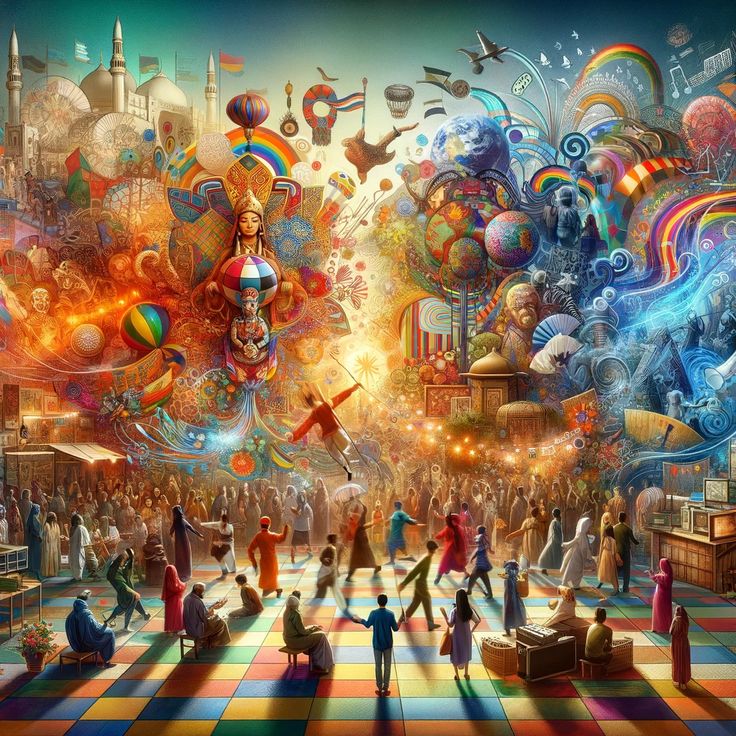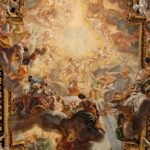Arts and Culture: A Vibrant Force Shaping Society
Arts and culture are deeply intertwined with the essence of humanity. From ancient cave paintings to contemporary digital art, the expression of human creativity has always been a means to understand and communicate our experiences, values, and emotions. Arts and culture play an essential role in shaping societies, influencing politics, and reflecting the diversity and complexity of human life.
In this exploration, we will delve into the importance of arts and culture, its history, its impact on daily life, and its significance in today’s world. Whether through music, dance, literature, or visual arts, the creative expressions that stem from arts and culture impact everyone’s life in profound and often unexpected ways.
The Rich History of Arts and Culture
The history of arts and culture dates back to the earliest moments of human civilization. From the first paintings on cave walls in prehistoric times to the rise of classical civilizations like Ancient Greece and Rome, art has always been an essential part of human existence.
In ancient Egypt, art was used to reflect the divine and commemorate kings and queens. The Renaissance, which blossomed in Europe between the 14th and 17th centuries, marked a period of immense cultural rebirth. It saw the birth of modern Western art, with figures like Leonardo da Vinci, Michelangelo, and Raphael pushing boundaries in visual art, architecture, and science.
In the 20th century, new forms of art emerged, including modernism and postmodernism, which revolutionized how we view creativity. Movements such as Cubism, Surrealism, and Abstract Expressionism challenged traditional aesthetics and introduced radical concepts about the nature of art.
The Impact of Arts and Culture on Daily Life
Arts and culture shape our daily lives in ways we may not even realize. Here’s how they affect us:
- Expression of Identity: Art and culture provide individuals and communities with the means to express their identity, values, and beliefs. It can be a form of protest, celebration, or storytelling that transcends the boundaries of language and communication. Whether through music, dance, or visual arts, people use these mediums to express who they are and connect with others who share similar experiences.
- Emotional Connection: The power of art to evoke emotion is undeniable. A piece of music, a film, or a painting can instantly change the way we feel, whether it inspires joy, sadness, or awe. The emotional connection that art fosters helps us navigate our personal experiences and adds richness to our lives.
- Cultural Diversity: Art and culture foster a deeper understanding of different cultures. Through exposure to art from around the world, individuals develop a sense of empathy and appreciation for the traditions, beliefs, and experiences of others. Whether through international film festivals, cultural exhibits, or traveling to different countries, the arts expose us to diverse perspectives and experiences.
- Inspiration for Innovation: Art fuels innovation in other sectors, including technology, business, and science. Designers and engineers often look to art for inspiration when creating new products, while musicians and filmmakers inspire new forms of digital media and virtual reality. The influence of art on innovation and technology encourages creativity and drives progress.
- Therapeutic Benefits: Engaging with the arts has been shown to improve mental health and well-being. Art therapy, for example, helps individuals process emotions, reduce stress, and build self-confidence. Whether participating in a painting class or attending a live performance, the arts provide a healthy outlet for emotional expression and healing.
Key Facts About Arts and Culture
- Forms of Art: Arts and culture span various disciplines, including visual arts (painting, sculpture), performing arts (dance, theater, music), literature, film, and digital art.
- Cultural Preservation: Cultural heritage sites, museums, and libraries play a vital role in preserving the history and cultural expressions of societies across the world.
- Global Influence: Arts and culture are universal, transcending borders and languages. They play an integral role in global diplomacy, international relations, and fostering peaceful cross-cultural exchanges.
- Art and Technology: The marriage of technology and art has led to the rise of new artistic forms, such as digital art, 3D printing, and virtual reality art.
- Public Art: Public art initiatives, such as murals, sculptures in parks, and art festivals, make art accessible to everyone, regardless of their background or socioeconomic status.
FAQs About Arts and Culture
- Why is art important in society? Art plays a crucial role in society by reflecting our shared experiences, challenging social norms, and promoting critical thinking. It has the power to unite communities, inspire social change, and offer a means of self-expression.
- What are some examples of cultural contributions? Cultural contributions include music, literature, theater, visual arts, and even culinary arts. These expressions of creativity contribute to the fabric of society and influence how we interact with one another.
- How does art impact mental health? Engaging with art can reduce stress, improve mood, and foster emotional well-being. Art provides an outlet for self-expression and helps individuals process emotions, making it an effective form of therapy.
- Can the arts improve social cohesion? Yes, the arts have the ability to bring people from different backgrounds together. Shared artistic experiences can foster understanding, build connections, and promote a sense of unity in diverse communities.
- How do artists influence society? Artists challenge conventional norms, provoke thought, and inspire change. Through their work, they can bring attention to social issues, represent marginalized voices, and inspire action in areas such as politics, environment, and equality.
The Significance of Arts and Culture in Today’s World
In today’s rapidly changing world, arts and culture remain a powerful force in shaping our society. They provide a framework for addressing complex issues such as climate change, inequality, and global conflict. Through art, we can communicate ideas, foster understanding, and create a more inclusive world.
Moreover, the digital revolution has made art more accessible, allowing people from all walks of life to engage with creative expressions through platforms like social media, streaming services, and virtual galleries. This democratization of art allows diverse voices to be heard and appreciated on a global scale.
Observance of Arts and Culture
Arts and culture are celebrated worldwide in numerous forms. International festivals, such as the Cannes Film Festival, the Venice Biennale, and the Edinburgh Festival, bring together artists and audiences from around the globe. National holidays, cultural observances, and museum exhibitions also celebrate the artistic and cultural heritage of different communities.
In a world increasingly focused on technology and innovation, arts and culture provide a necessary counterbalance. They encourage critical thinking, emotional intelligence, and a deeper understanding of human nature.
Conclusion: The Enduring Importance of Arts and Culture
In conclusion, arts and culture are an indispensable part of the human experience. From their historical significance to their impact on daily life, arts and culture continue to shape the world in profound ways. They provide a means of expression, foster emotional connection, promote social cohesion, and inspire innovation. As we continue to navigate the challenges of the modern world, the role of arts and culture in society will remain vital, offering us a powerful tool for personal growth, societal change, and global understanding.
Final Thought: Embracing the arts is not just about appreciating beautiful things—it’s about recognizing the deep connections that bind us as a global society.










